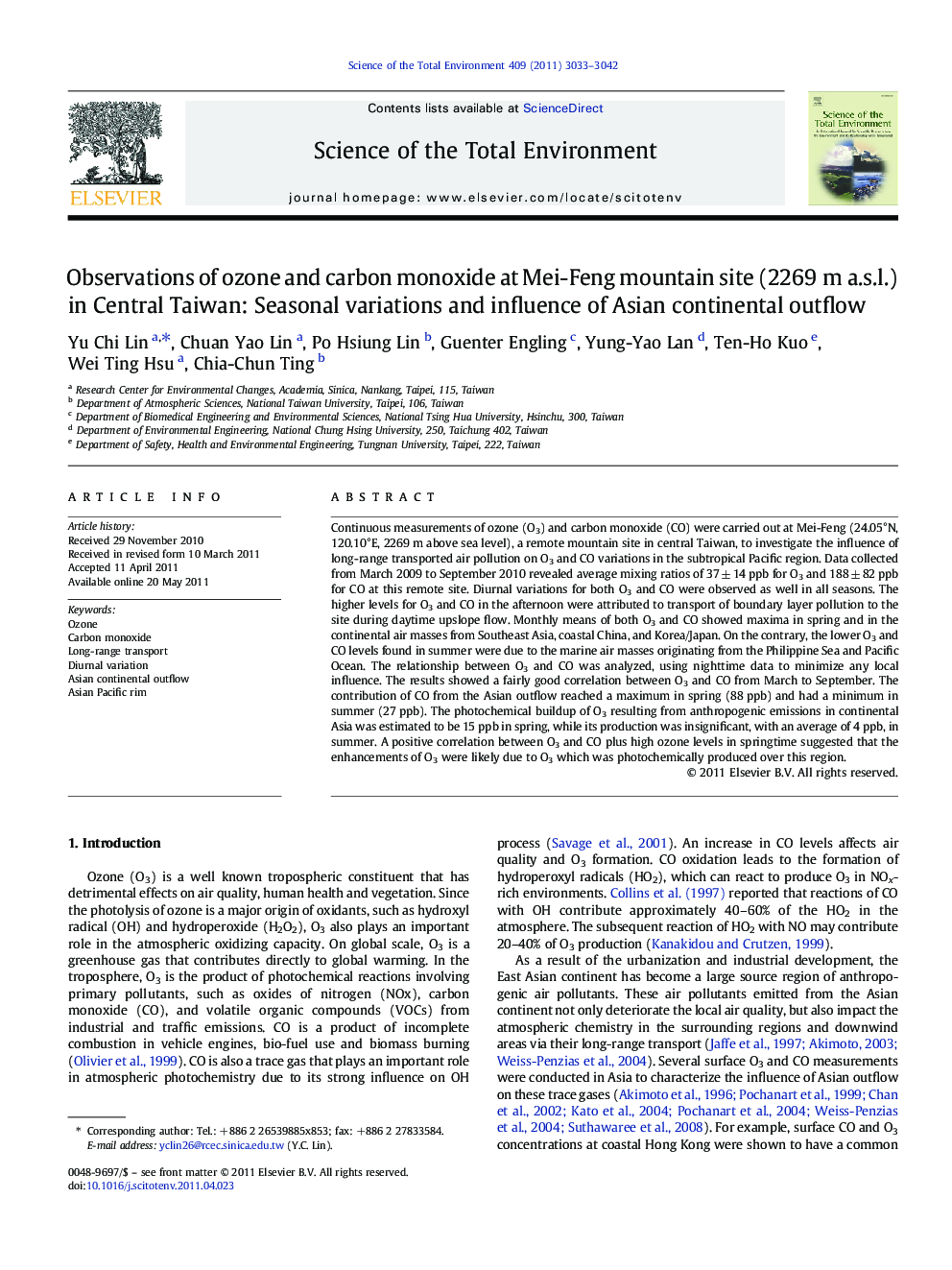| Article ID | Journal | Published Year | Pages | File Type |
|---|---|---|---|---|
| 4430201 | Science of The Total Environment | 2011 | 10 Pages |
Continuous measurements of ozone (O3) and carbon monoxide (CO) were carried out at Mei-Feng (24.05°N, 120.10°E, 2269 m above sea level), a remote mountain site in central Taiwan, to investigate the influence of long-range transported air pollution on O3 and CO variations in the subtropical Pacific region. Data collected from March 2009 to September 2010 revealed average mixing ratios of 37 ± 14 ppb for O3 and 188 ± 82 ppb for CO at this remote site. Diurnal variations for both O3 and CO were observed as well in all seasons. The higher levels for O3 and CO in the afternoon were attributed to transport of boundary layer pollution to the site during daytime upslope flow. Monthly means of both O3 and CO showed maxima in spring and in the continental air masses from Southeast Asia, coastal China, and Korea/Japan. On the contrary, the lower O3 and CO levels found in summer were due to the marine air masses originating from the Philippine Sea and Pacific Ocean. The relationship between O3 and CO was analyzed, using nighttime data to minimize any local influence. The results showed a fairly good correlation between O3 and CO from March to September. The contribution of CO from the Asian outflow reached a maximum in spring (88 ppb) and had a minimum in summer (27 ppb). The photochemical buildup of O3 resulting from anthropogenic emissions in continental Asia was estimated to be 15 ppb in spring, while its production was insignificant, with an average of 4 ppb, in summer. A positive correlation between O3 and CO plus high ozone levels in springtime suggested that the enhancements of O3 were likely due to O3 which was photochemically produced over this region.
Research Highlights► We explore the influence of Asian outflow on O3 and CO at the Pacific rim. ► The average O3 and CO concentrations were 37 and 188 ppb, respectively, at Mei-Fong Mt. site. ► The O3 and CO observed at Mei-Fong Mt. site have fairly good correlations in springtime. ► The significant contribution of Asian continental outflow to O3 (15 ppb) and CO (88 ppb) was found in springtime. ► This suggested the enhanced O3 in spring was from regional photochemically produced O3.
